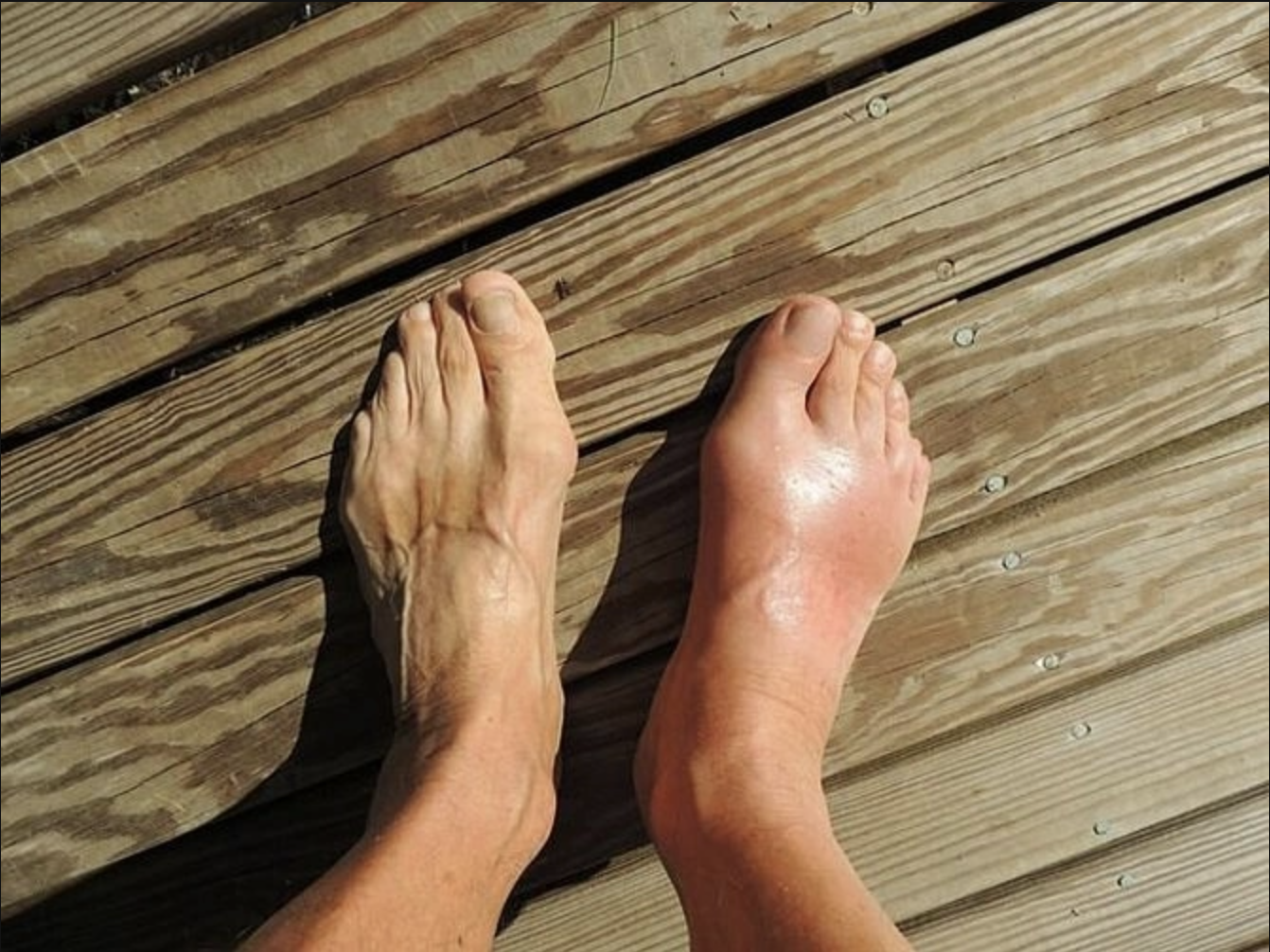High uric acid, also known as hyperuricemia, is increasingly common in young people. This occurs when the body produces too much uric acid or doesn't excrete enough through urine. High uric acid levels often go unnoticed until it's too late. Consistently high uric acid can lead to painful conditions like gout, kidney stones, and even long-term joint or kidney damage.
Uric acid is produced in the body as a byproduct of purine breakdown. Purines are commonly found in certain foods and drinks like red meat, seafood, and alcohol. Early detection of high uric acid is key to managing and preventing future complications. However, most people don't notice the early signs until the condition worsens.
Here are some signs to watch out for:
Sudden joint pain
Sudden, intense joint pain, especially in the big toe, is one of the earliest and most common signs of high uric acid. The pain often comes on suddenly and can be severe, possibly occurring at night, accompanied by redness, swelling, or tenderness to the touch. This happens when uric acid crystals deposit in the joints, causing inflammation.
While it typically affects the big toe, sudden joint pain can also occur in other parts of the body like the ankles, knees, or fingers. If you’ve never had joint problems before and suddenly experience such pain, you should get your uric acid levels checked and consult a doctor.
Joint swelling and redness
Joint swelling and redness are another classic sign of a gout flare-up. Even if you don't feel intense pain, slight swelling, warmth, or redness around a joint can indicate uric acid buildup. This is an early inflammatory response before a full-blown gout attack. The joint might feel stiff or look shiny due to inflammation.
 |
Swollen and painful foot due to gout. Photo: footdoctorscolorado |
Swollen and painful foot due to gout. Photo: footdoctorscolorado
Fatigue and weakness
Unexplained fatigue and weakness can sometimes be due to high uric acid levels. Chronic inflammation from uric acid crystal deposits can drain your energy and make you feel sluggish. If you’re constantly exhausted even after 7-8 hours of sleep, and also experience joint discomfort, your fatigue could be related to metabolic health, including a uric acid imbalance. Get a health checkup to identify any underlying health issues.
Frequent urination or sudden changes in urine
Frequent urination or a sudden change in your urine, especially at night, could be a sign that your kidneys are working overtime to eliminate excess uric acid. If your urine appears cloudy, has a foul odor, is darker in color, or even contains blood, it could indicate high uric acid levels. Don't ignore this important sign as it can lead to more serious kidney problems down the road.
Muscle stiffness
Muscle stiffness can also be caused by high uric acid, especially in the mornings. This isn't usually localized or intense stiffness like joint pain, but it can reduce flexibility and make everyday movements difficult. It’s a sign of low-grade inflammation in the body. If you notice this type of muscle stiffness along with other symptoms, don't dismiss them. Get medical tests done and consult your doctor.
Skin problems or peeling
In some cases, uric acid crystals near the skin's surface can lead to peeling, itching, or scaling, especially around the joints. People with chronic gout can even develop tophi - hard, visible lumps under the skin. Dry, irritated skin over joints is an early sign of high uric acid levels.
Mild fever
A mild fever and malaise are also subtle signs of high uric acid, primarily due to inflammation. Though low-grade, such mild fevers often accompany joint flare-ups or internal inflammation and are triggered by uric acid buildup. If you feel unwell but can’t pinpoint a cause like an infection or the flu, consider checking your uric acid levels and consulting a doctor.
My Y (According to Times of India)












